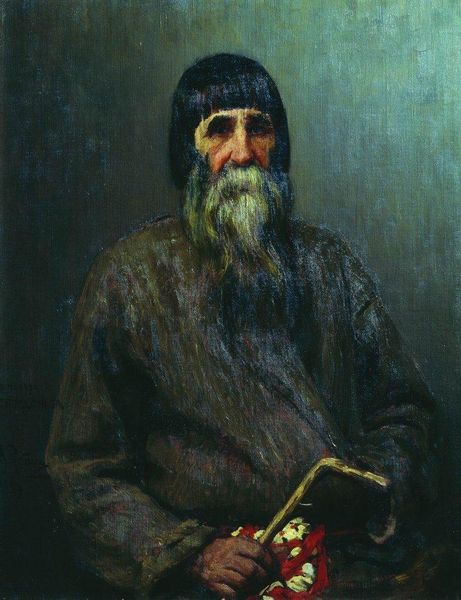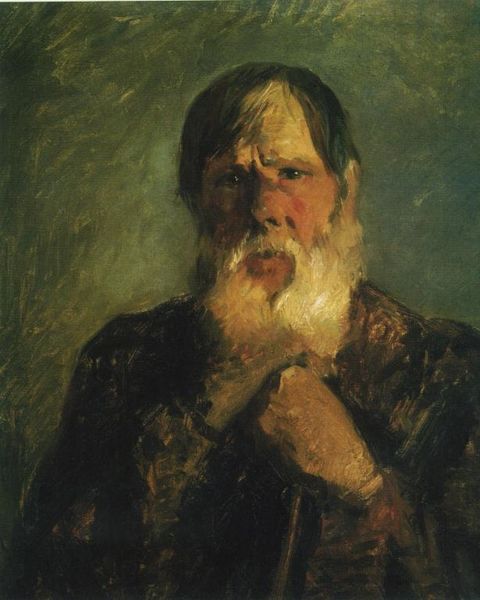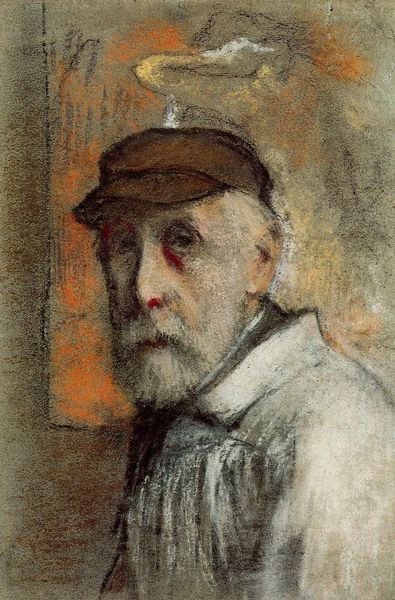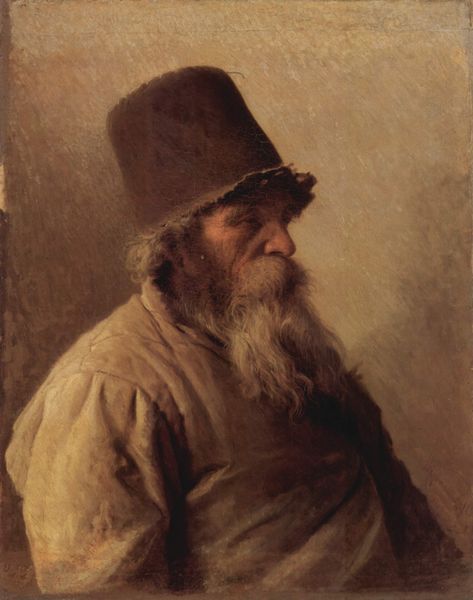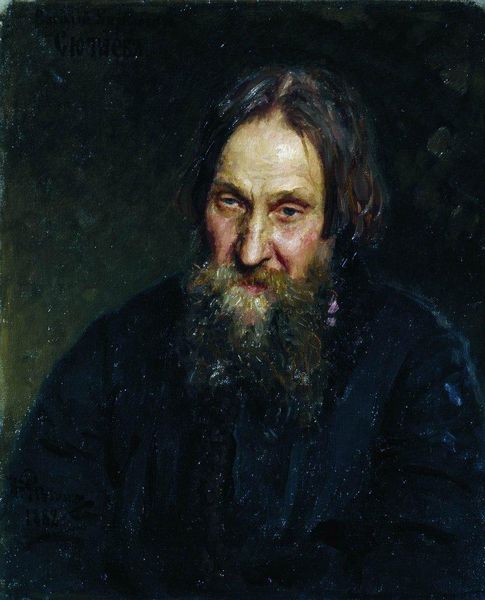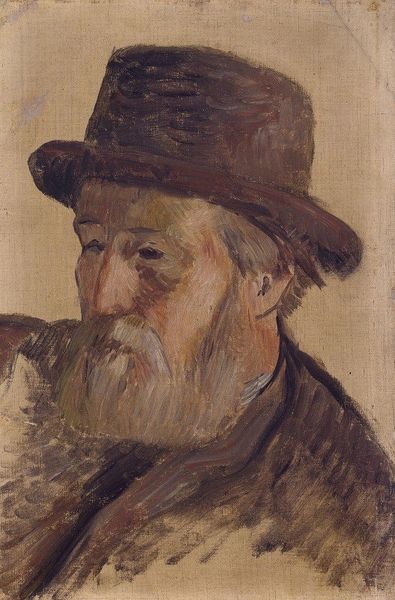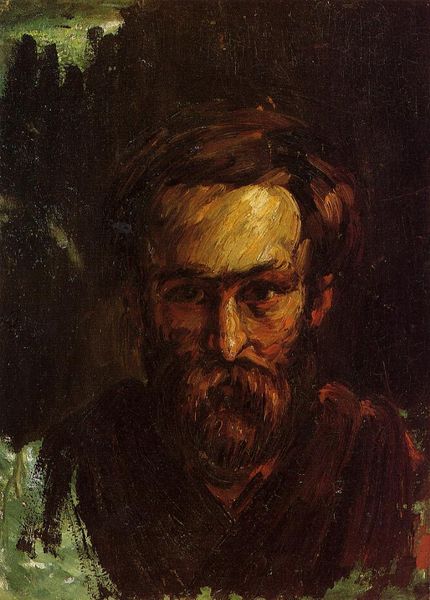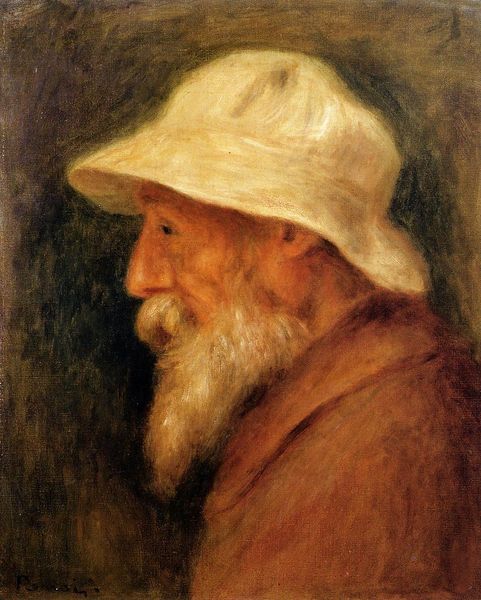
Copyright: Public domain
Curator: Here we have Ilya Repin's "Seller of Student Works at the Academy of Arts," painted in 1870. The painting uses oil on canvas to create a powerful, somewhat forlorn portrait. What catches your eye? Editor: The way his eyes seem to be turned inward. The thick beard and oddly shaped hat create an aura of world-weariness and resignation, wouldn't you say? Curator: Indeed. It strikes me that this image of an elderly seller highlights the contrast between the artistic dreams of youth and the often harsh realities of the art market, doesn't it? The artist’s depiction of the figure in oil suggests Repin's own wrestling with what labor in the field of art is worth, wouldn’t you say? Editor: Absolutely, I do! Especially if we consider the art academy's socio-economic structures, and how some got rich selling student artworks. I can’t help but notice the way Repin uses the brushstrokes to model his weathered face, hands, and costume, adding texture and depth to this man. I imagine Repin felt compelled to address class divisions and artistic labour, no? Curator: Perhaps. It's a compelling idea, however, and certainly lends the work extra weight. His direct gaze, his clothing; the man looks simultaneously vulnerable and like an ancient, unshakeable oak tree! There's something intensely human about the sitter. Editor: Well put! Seeing the material reality represented and understanding its wider circulation gets me thinking: what does labor look like, and what can an art practice do? Curator: Food for thought, certainly. "Seller of Student Works..." allows us a peek into the material world, while Repin gifts us his personal artistic language. Editor: Ultimately, an excellent demonstration of how an art history-minded viewer can reflect critically on how production shapes aesthetics. Thanks so much. Curator: Indeed. It's been my pleasure. I'll never see this old man again without reflecting on both art and commerce.
Comments
No comments
Be the first to comment and join the conversation on the ultimate creative platform.


